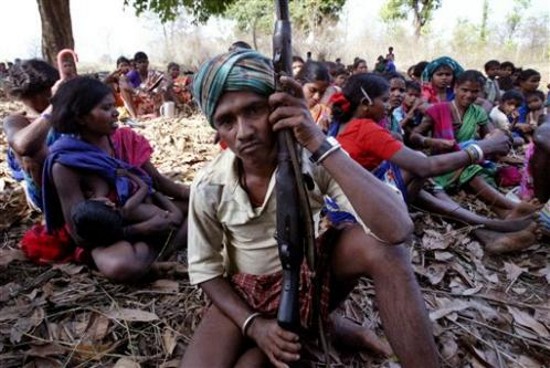
It is unfortunate that the Indian Prime Minster Dr Manmohan Singh, the scholar and economist while describing the Naxalites as the single biggest internal security threat chose to overlook the reasons that led to the proliferation of the Naxalites in India. Lopsided economic development, urban-centric policies had further impoverished and marginalized the rural poor, a large number of whom are tribals and poor dalits whose lives revolved around the jungle and villages for livelihood. While mines were exploited in the otherwise backward states of Bihar, Orissa and Madhya Pradesh after independence, the sons of the soil fueled the rank of the poor in these regions. Poverty, illiteracy, unemployment, social injustice and caste system gave birth to the Naxals or the Maoists as they are called in India.
First making its appearance in 1967 in the Naxalbari village in West Bengal with a peasant uprising, the Naxals are active in 16 of India’s 28 states. The recent electoral victories of the Maoists in Nepal had morally strengthened them. The question that now arises is how will India control and pacify its Maoists? In a report prepared for the Planning Commission of India, it has been suggested that the Indian government should begin talks with the Naxalites. The Indian government had clinched to a rigid policy for decades that prevented any negotiation with the Naxalites until they renounced violence. The panel also wants the government to address the economic issues that are the root cause of the problem. Instead of relying solely on security, the Indian government should implement plans to develop the backward regions of the country that are the Naxalite strongholds.
Naxalism is a social problem. Unless the Indian government accepts this truth, the problem will continue and lives will be lost.
Source: Times online
Image




